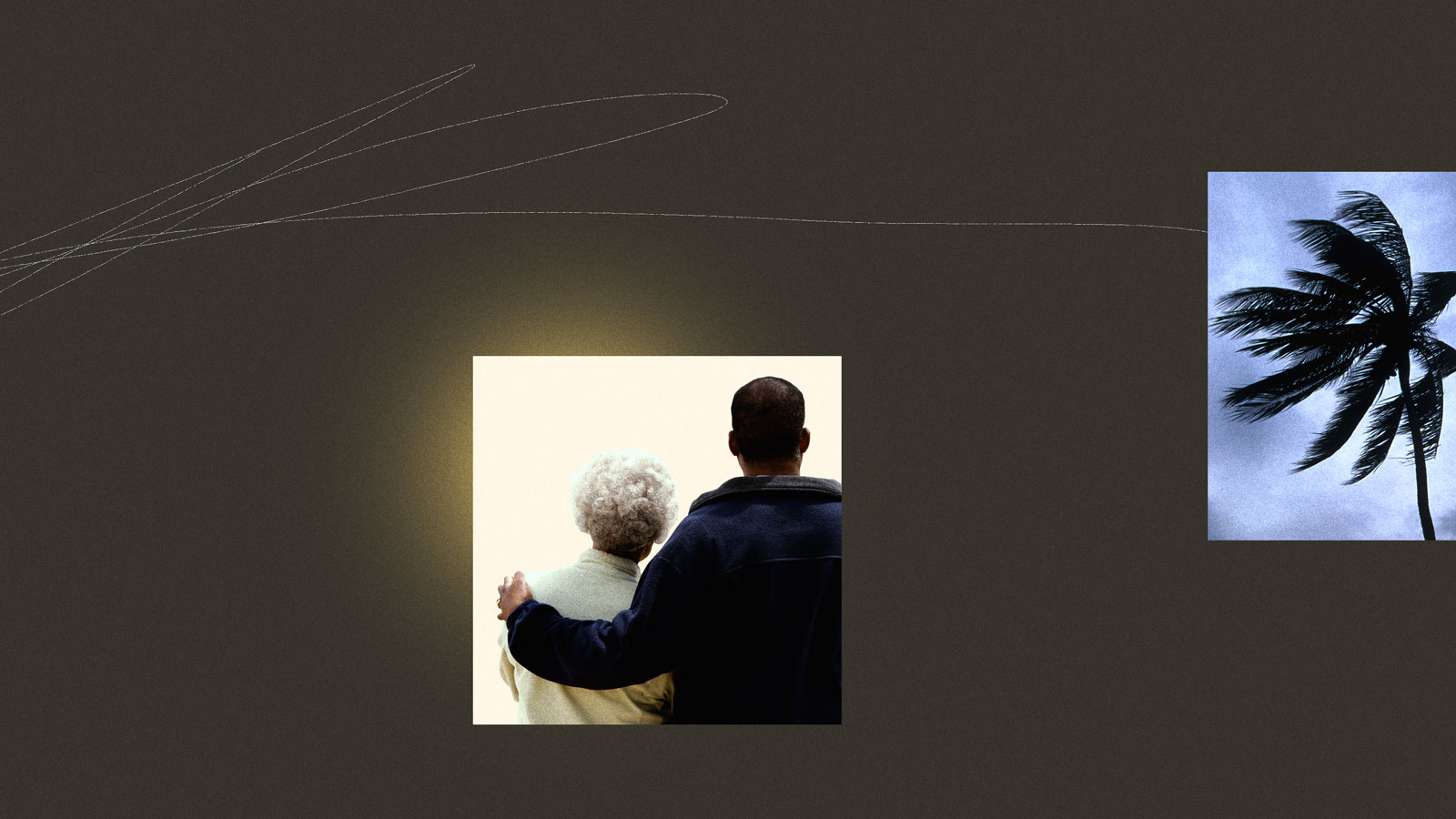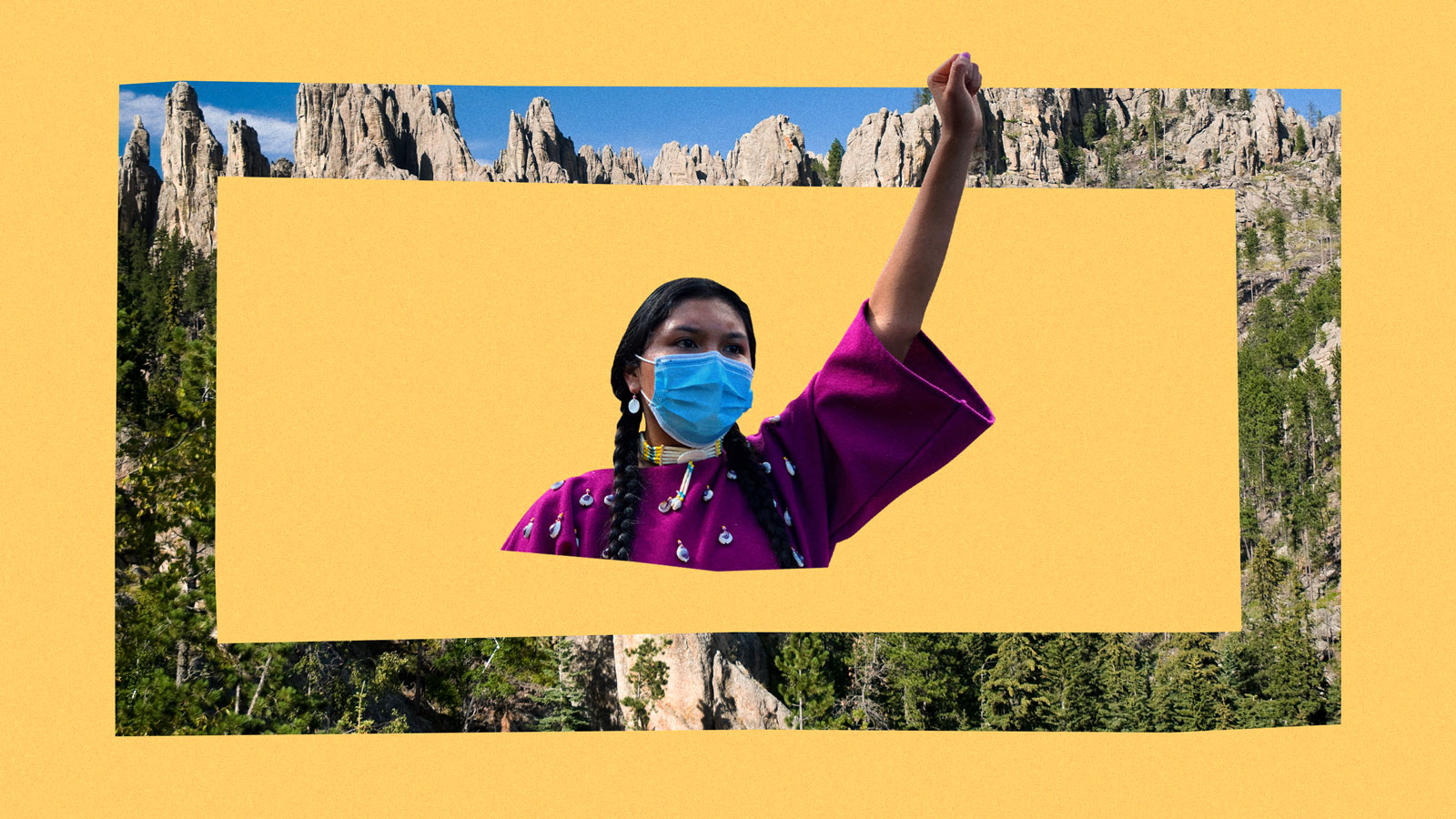This story is part of Fix’s What’s Next Issue, which looks ahead to the ideas and innovations that will shape the climate conversation in 2022, and asks what it means to have hope now. Check out the full issue here.
Last July, Ojibwe lawyer and activist (and 2017 Grist 50 honoree) Tara Houska spoke from a section of the Enbridge Line 3 pipeline in northern Minnesota, where more than a dozen water protectors had chained themselves to block further construction. “I’m not convinced that human beings are going to figure it out in time,” she said, “but to me, it’s about knowing that we can still create the most equitable and just and loving society we possibly can, even if we are past the point of no return.” I was 1,400 miles away in Houston, repairing broken pipes and replacing sheetrock after Winter Storm Uri’s freezing temperatures flooded tens of thousands of homes in February 2021. As a climate activist, I’d been closely following the Indigenous-led resistance to Line 3 and was deeply inspired by the activists’ defense not just of land, but of the sacredness of the earth.
Although protests delayed construction for almost a year, by October Enbridge had, through force and violence, completed the nation’s most expensive tar sands pipeline. By year’s end, Line 3 had carried almost 50 million barrels of oil through the headwaters of the Mississippi River, an area home to the Anishinaabe people and more than 800 wetlands and 200 bodies of water, including 22 rivers.
A gut-wrenching defeat, I thought. That’s that. Then I watched as water protectors kept going, rallying in Washington, D.C., and filing lawsuits to rescind the permit. Battles like these are never over so long as there is something left to save. The loss was not the end, just another lesson learned: Confronting today’s ecological reality requires one to keep fighting past what feels like the end of the world.
I was born in 1999. Depending on how things go, I may have about the same life expectancy as a planet broadly habitable for humans. On the plus side, it’s easy for me to remember emissions-reduction targets. By the time I turn 30, the U.S. needs to be at net zero. We have eight years, says the Intergovernmental Panel on Climate Change, until the planet experiences irreversible damage.
If we have less than a decade to “save our future,” as protest signs proclaim, there could not be a more critical time than now to join the climate movement. Yet many of my friends, rather than being roused to action, tell me matter-of-factly that they’re not going to have kids in acceptance of ecological doom. Underneath my own climate activism lies a gnawing doubt that, yeah, we may be screwed. I’m reluctant to put money into a retirement account because I’m not sure we’ll still have an economy by the time I can cash out.
On a gut level, many of us recognize that we don’t actually have until 2030 to act. The distant future that scientists and dystopian writers warned us about — wrathful eyes of fire, melting roads, collapsing seaside high-rises — is already here. The world has rocketed past emissions thresholds and broken a number of temperature records too painful to count. Our global ecosystem teeters on the brink of dozens of ecological tipping points. Both parties of the U.S. government are rolling in oil money, ill-equipped and disincentivized to act in accordance with the magnitude of the crisis. It all feels terrifying and somehow unreal.
Growing up in the 21st century wears on the soul as we oscillate between climate anxiety and climate depression. Climate nihilism sometimes feels like the only rational response, because what does it mean, now, to save the world?
“Protecting the last beautiful places, protecting the sacred,” Houska answers from the front lines. It’s the reason Line 3 water protectors camped out through the cold Minnesota winter, the reason they put their bodies on the line, enduring arrests, surveillance helicopters, and police harassment.
Protecting the last beautiful places. This sacred land is already among the last.
The end of the world feels new only if we think of it as the world, a single end. If a world is not only dirt and brick but also a collective people’s memories and homes and history, then we have already witnessed the apocalypse a hundred times over. The violence inflicted by the West on the colonial world was as total, cruel, and world-ending as climate disasters are. The American empire was founded on the genocide of Indigenous communities and the enslavement of African peoples. For those outside the bubble of Western exceptionalism, America is already a post-apocalyptic society.
I think of my own community in Houston, a city that’s lived through five disastrous floods in the past six years. We get a bad rap for being a concrete-covered, humid, sweaty mess. But Houston is also a “last beautiful place,” a city wholly without pretension despite being full of glamour, a city that droops with vast oak branches and seeps pink into the sky at 3 a.m. It’s a place worth fighting like hell for.
As my city endures disaster after disaster, the resistance at Line 3 has taught me to find meaning in the struggle even if we’re unsure of the final outcome. The nonprofit I work for, West Street Recovery, rebuilds homes that have repeatedly flooded and will almost surely flood again. We rebuild again and again because we believe each of us inhabits communities, histories, and lands that are sacred in and of themselves.
The fall of Line 3 reasserted the brutal mechanisms of fossil fuels’ continued dominance. As with the Dakota Access and Keystone XL pipelines, violent repression was on full display: militarized police squads brutalized protestors with rubber bullets and tear gas and arrested more than 600 people during the protests. The governments of the United States and Canada, a variety of armed state and federal agencies, and a multinational corporation joined forces against protesters, united in a goal of mutual profit should the pipeline succeed.
Beneath political gestures from our “climate president,” this willingness to violently uphold the fossil fuel economy is deeply bipartisan. After much fanfare around shutting down the Keystone XL pipeline, President Joe Biden greenlit Line 3. A week after the COP26 conference, Biden opened more than 80 million acres in the Gulf of Mexico to auction for drilling. While activists hold our breath for Build Back Better money, the White House will hand out more oil and gas drilling permits in 2021 than in any year during former President Trump’s term.
All this is a sobering reminder that the U.S. climate movement cannot keep restricting our strategy to naive optimism for federal action. Yes, we should continue to push for national energy transition and climate mitigation, but not at the risk of defeatism should substantive legislation fail to pass.
If a world is not only dirt and brick but also a collective people’s memories and homes and history, then we have already witnessed the apocalypse a hundred times over.
Despite being a coastal city on the front lines of climate impacts, Houston’s pro-energy government has made almost no progress on our local Climate Action Plan. This is no surprise, given that the “oil and gas capital of the world” is home to roughly half of the nation’s publicly traded oil and gas firms, including Shell, BP, and ConocoPhillips. (A testament to the interconnectedness of our struggles, Houston is also home to none other than Enbridge’s U.S. headquarters.) State and local government’s disaster response to Hurricane Harvey and Winter Storm Uri was almost as catastrophic as the climate events themselves.
So we have learned we can’t depend on the government to save us. Fully recognizing the failure of the state to deliver on basic needs for Black, brown, and poor people may be an end to the illusion of American democracy, but it also motivates us to create an alternative. In Houston we are using the disaster recovery process to build community power, teaching residents to repair sheetrock and distributing disaster go-bags in case of evacuation. Communities in Houston and beyond can still resist extractive infrastructure and temper the horrors it inflicts not just by voting or marching, but through disruptive direct action and a politics of care.
If the climate movement focuses on the places we are closest to, we can bring power and resources back to our own communities, build alternatives to our current fossil fuel economy, and implement local adaptation strategies to prepare for inevitable climate impacts.
In response to climate nihilism, and in the face of ever-narrowing pathways for hope, we must localize the apocalypse. We have already lost worlds upon worlds. We may not figure it out in time. But until then, there is still so much left to defend, to love, to believe in.
The poet Ocean Vuong once wrote an essay about fire escapes. It ends like this: “The fire has already begun in my home, swallowing my most valuable possessions … But I still have my body and with it these words, hammered into a structure just wide enough to hold the weight of my living.”
Alice Liu is a co-director at West Street Recovery, a non-hierarchical disaster recovery group formed after Hurricane Harvey that is repairing homes and building resilience in communities devastated by climate disasters yet excluded from most federal aid. She is also a public voices fellow with The OpEd Project and the Yale Program on Climate Change Communication.
The views expressed here reflect those of the author.
Fix is committed to publishing a diversity of voices, and we want to hear from you. Got a bold idea, fresh perspective, or insightful news analysis? Send a draft, along with a note about who you are, to opinions@grist.org.




